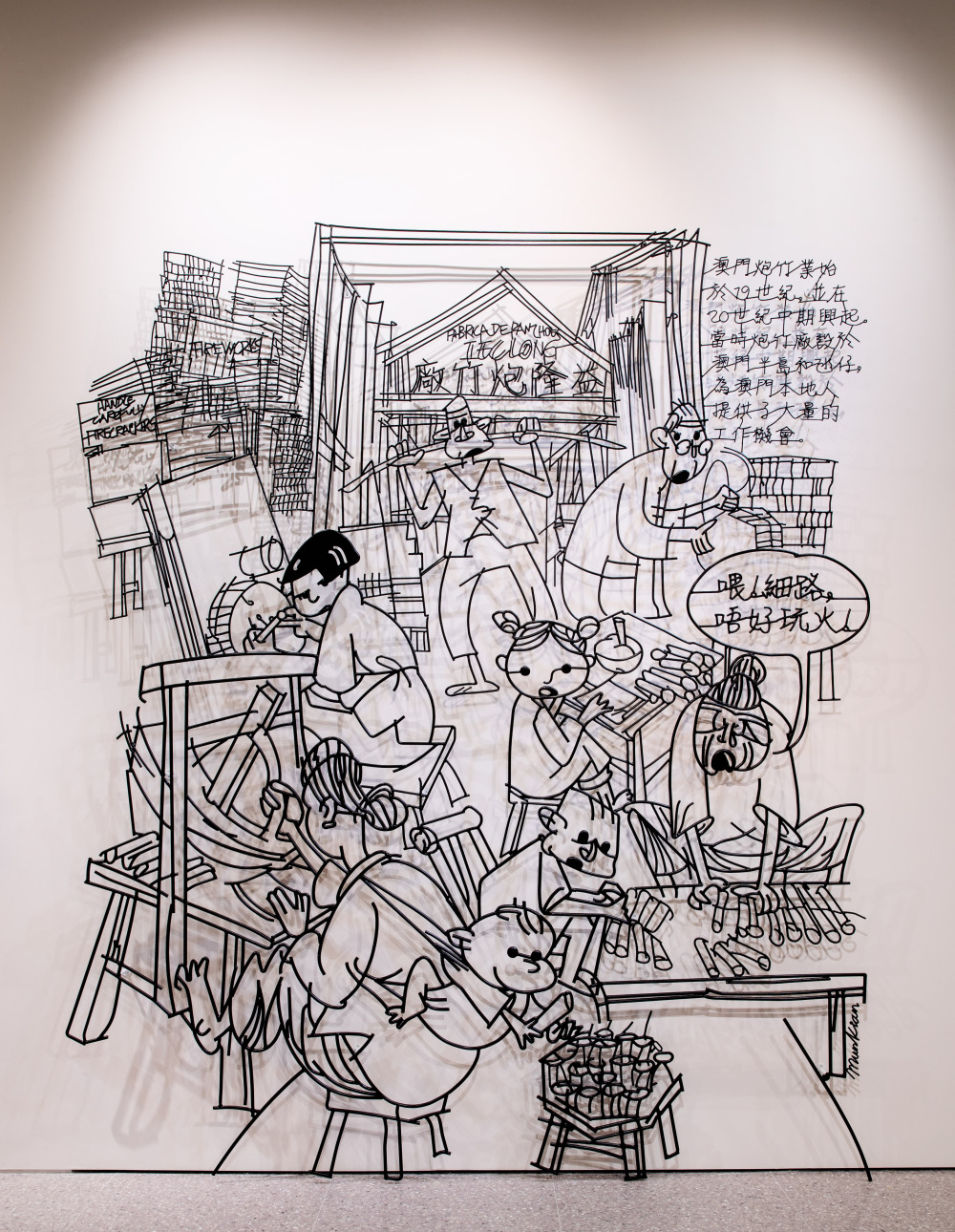

Special Exhibition of “Art Macao: Macao International Art Biennale 2021”
06
Opium
- MEDIA
- Welded Steel
- DIMENSION
- 3500H x 3200W
- YEAR
- 2021
CHILDREN’S AUDIO GUIDE
Children’s Audio Guide is only available in Cantonese & Mandarin
LIN FUNG TEMPLE:
CENTURIES-OLD TEMPLE AND OUR NATIONAL HERO
Also known as the Temple of the Lotus, Lin Fung Temple, together with A-Ma Temple and Kun lam Temple, are the three most famous temples in Macao. Originally named Tianfei Temple, it was built in 1592 during the Ming Dynasty, and it was after the building had undergone five rounds of reconstructions that it was finally renamed Lin Fung Temple.
Lin Fung Temple occupies a large site, and features several rooms and praying areas, with the main hall in the centre of the complex dedicated to Kun Iam, Goddess of Mercy. In front of the Temple is a spacious square surrounded by stone enclosures, and populated with ancient trees with thick leaves. Behind it there is a small ornamental garden with pavilions, flowers and grass. There is also a lotus pond in the temple and, during the summer, the pond flourishes with green leaves and fragrant flowers. Behind the lotus pond are two murals, one depicting dragons and a giant carp, and the other a phoenix and the sun, personifying forging ahead to strive for success against all odds.
China’s national hero, Lin Zexu (1785-1850), an Imperial Commissioner during the Qing Dynasty and the Governor of Guangdong and Guangxi provinces, stayed at Lin Fung Temple when he came to Macao. It was here where he conducted an inspection of Macao and prohibited smoking and trading of opium completely, after measures he had taken in 1839 to eliminate the opium trade in China altogether. A 3-metre-high stone statue of Lin Zexu was erected in 1989 upon the 150th anniversary of this historic event. In November 1997, the Lin Zexu Memorial Museum of Macao was completed, housing exhibition areas showcasing the ban on opium trade and Lin’s inspection tour in Macao, and a large collection of pictures of Macao during its early days.










